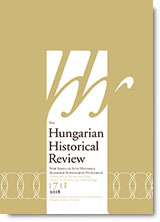The Formation of Modern Turkic ‘Ethnic’ Groups in Central and Inner Asia
The Formation of Modern Turkic ‘Ethnic’ Groups in Central and Inner Asia
Author(s): Dávid Somfai KaraSubject(s): Ethnohistory
Published by: Magyar Tudományos Akadémia Bölcsészettudományi Kutatóközpont Történettudományi Intézet
Keywords: ethnos; conic caln system; Turkic; Inner Asia; Central Asia; Mongolic
Summary/Abstract: International Asian studies, including Asian studies in Hungary, have examined several livestock breeding and horse-riding nomadic groups which provide additional data for hypotheses concerning the social structure of the pre-Conquest Hungarians. Some important questions related to the early history of Hungarians cannot be examined due to the lack of written historical data. But we do have written data related to Central and Inner Asia (the so-called Steppe Region) from the nineteenth and twentieth centuries and sometimes from much earlier periods.1 One of these problems is the relationship between etic and emic terms for various “peoples.” Another is the appearance of ethnonyms on different levels (ethnic, sub-ethnic, clan, and sub-clan)2 among various ethnic groups. One might well wonder whether it is really appropriate to use ethnonyms as designations for these ethnic groups. After all, several modern ethnic groups were formed only in recent times, and the ethnonyms which are used to refer to them (today autonyms) are the result of political (not ethnic) processes, and they are sometimes the decision of a small group. Similar processes can be observed in Europe in early medieval times.3 Ethnic names have also undergone rapid changes, and it is interesting to observe attempts to create a national history for these modern ethnic groups, and the obvious shortcomings of these attempts.
Journal: The Hungarian historical review : new series of Acta Historica Academiae Scientiarum Hungaricae
- Issue Year: 7/2018
- Issue No: 1
- Page Range: 98-110
- Page Count: 13
- Language: English

